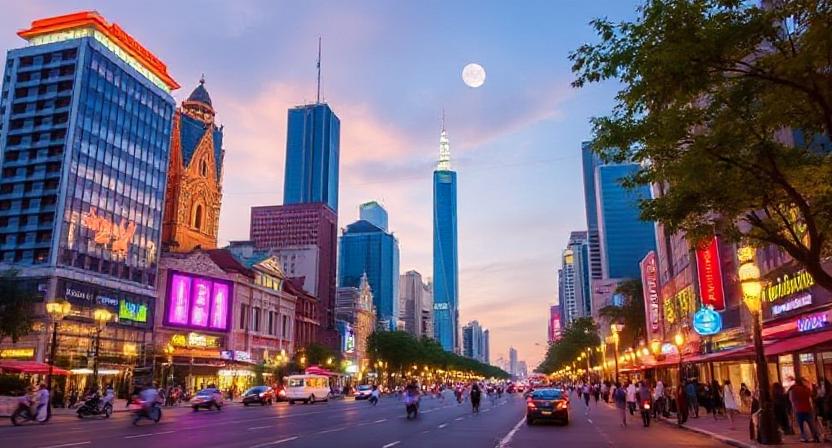GAPP to Unveil Wild Alaska Pollock Industry’s Second Life Cycle Assessment Results at 2025 Meeting – Seafoodnews

Report on the Wild Alaska Pollock Industry’s Second Life Cycle Assessment and Alignment with Sustainable Development Goals
Executive Summary
The Association of Genuine Alaska Pollock Producers (GAPP) has commissioned a second Life Cycle Assessment (LCA) for the Wild Alaska Pollock industry. The findings, scheduled for release on September 18, 2025, will provide critical data on the industry’s environmental performance. This initiative directly aligns with global sustainability efforts, particularly the United Nations Sustainable Development Goals (SDGs), by promoting transparency, resource efficiency, and climate action within the marine food sector.
Assessment Details and Scope
- Organization: The Association of Genuine Alaska Pollock Producers (GAPP)
- Event: Seventh Annual GAPP Meeting
- Announcement Date: September 18, 2025
The LCA will analyze the industry’s environmental footprint across its entire value chain. Key areas of analysis include:
- Global Warming Potential
- Total Energy Use
- Land Resource Utilization
- Water Resource Utilization
Alignment with Sustainable Development Goals (SDGs)
The GAPP initiative demonstrates a significant commitment to advancing several SDGs by measuring and managing the environmental impact of its operations.
-
SDG 12: Responsible Consumption and Production
The LCA is a core tool for achieving sustainable production patterns. By quantifying its environmental footprint, the industry is enhancing transparency and accountability, responding directly to consumer demand for sustainably sourced protein and enabling more responsible consumption choices.
-
SDG 13: Climate Action
The assessment’s focus on global warming potential and energy use provides actionable data for the industry to mitigate its climate impact. This aligns with the urgent need to combat climate change and its effects on marine ecosystems.
-
SDG 14: Life Below Water
As a wild-capture fishery, the industry’s sustainability is intrinsically linked to the health of marine ecosystems. The LCA supports the conservation and sustainable use of oceans and marine resources by providing a scientific basis for continuous improvement in fishing and processing practices.
-
SDG 6 & SDG 15: Clean Water and Life on Land
By including land and water resource use in its analysis, the assessment addresses the industry’s impact beyond the ocean, contributing to the sustainable management of freshwater resources and terrestrial ecosystems affected by supply chain activities.
SDGs Addressed in the Article
-
SDG 12: Responsible Consumption and Production
The article directly addresses this goal by discussing the Wild Alaska Pollock industry’s effort to understand and manage its environmental impact through a Life Cycle Assessment (LCA). The mention of “sustainable protein” and consumer purchasing decisions highlights the connection between sustainable production methods and responsible consumption patterns.
-
SDG 14: Life Below Water
As the article is about “Wild Alaska Pollock,” a marine resource, it is inherently linked to the sustainable use of oceans and marine life. The industry’s initiative to conduct an LCA to assess its “environmental footprint” is a step towards the sustainable management of marine resources, which is central to SDG 14.
-
SDG 13: Climate Action
This goal is relevant because the LCA specifically analyzes the industry’s “global warming potential.” This shows a direct effort by the industry to measure and subsequently manage its contribution to climate change, which is a core component of SDG 13.
-
SDG 7: Affordable and Clean Energy
The article mentions that the LCA study includes “energy use” as a key category for analysis. This connects to SDG 7’s aim to improve energy efficiency, as understanding energy consumption is the first step toward reducing it and improving efficiency within the industry’s operations.
Identified SDG Targets
-
Target 12.2: By 2030, achieve the sustainable management and efficient use of natural resources.
The article’s focus on a Life Cycle Assessment that analyzes the “environmental footprint” across “land and water resources” and “energy use” directly relates to this target. The LCA is a tool for measuring and improving the efficiency of natural resource use in the production of Alaska Pollock.
-
Target 14.4: By 2020, effectively regulate harvesting and end overfishing… and implement science-based management plans…
The article implies this target through its discussion of a major wild-caught fish industry assessing its sustainability. An LCA provides the scientific data (“science-based management plans”) necessary to ensure that harvesting practices are sustainable and to meet consumer demand for “sustainable protein,” which inherently requires healthy and well-managed fish stocks.
-
Target 13.3: Improve education, awareness-raising and human and institutional capacity on climate change mitigation…
The decision by the Association of Genuine Alaska Pollock Producers (GAPP) to conduct an LCA and publicly unveil the findings at its annual meeting serves to raise awareness and build institutional capacity within the industry. By analyzing its “global warming potential,” the industry is educating itself and its stakeholders on its climate impact, which is a key aspect of this target.
-
Target 7.3: By 2030, double the global rate of improvement in energy efficiency.
The inclusion of “energy use” as a key analytical category in the LCA directly supports this target. By measuring its energy consumption, the industry is creating a baseline from which it can work to improve its energy efficiency over time.
Implied Indicators for Measuring Progress
-
The Life Cycle Assessment (LCA) as a whole
The article states that the GAPP will unveil the “second Life Cycle Assessment.” The LCA itself, and the practice of conducting it periodically, serves as an indicator of the industry’s commitment to monitoring and improving its environmental performance over time.
-
Land and Water Resource Use
The article explicitly mentions that the LCA analyzes “land and water resources.” The specific metrics used to quantify this (e.g., gallons of water per ton of fish, acres of land per facility) are implied indicators for measuring progress towards Target 12.2.
-
Global Warming Potential
This is an explicitly mentioned category from the LCA. The measurement of “global warming potential” (likely in CO2 equivalents) is a direct indicator used to track the industry’s climate impact, relevant to SDG 13.
-
Energy Use
The article identifies “energy use” as a key metric. The amount of energy consumed per unit of production is a specific indicator of energy efficiency, which can be used to measure progress towards Target 7.3.
Summary of SDGs, Targets, and Indicators
| SDGs | Targets | Indicators |
|---|---|---|
| SDG 12: Responsible Consumption and Production | 12.2: Achieve the sustainable management and efficient use of natural resources. | The Life Cycle Assessment (LCA) itself; Metrics on “land and water resources” use. |
| SDG 14: Life Below Water | 14.4: Effectively regulate harvesting… and implement science-based management plans. | The LCA study as a science-based tool to inform sustainable management of a marine resource. |
| SDG 13: Climate Action | 13.3: Improve education, awareness-raising and human and institutional capacity on climate change mitigation. | Measurement of the industry’s “global warming potential” as part of the LCA. |
| SDG 7: Affordable and Clean Energy | 7.3: Double the global rate of improvement in energy efficiency. | Measurement of “energy use” as a key category in the LCA to track energy efficiency. |
Source: seafoodnews.com

What is Your Reaction?
 Like
0
Like
0
 Dislike
0
Dislike
0
 Love
0
Love
0
 Funny
0
Funny
0
 Angry
0
Angry
0
 Sad
0
Sad
0
 Wow
0
Wow
0











































































